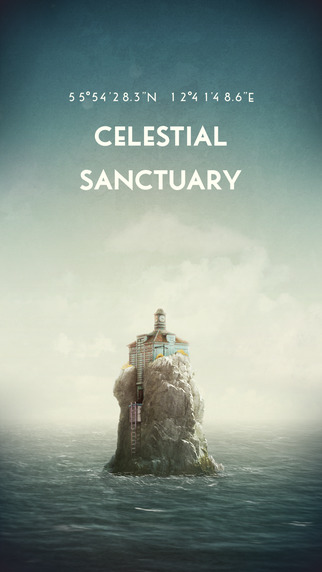Between games like Year Walk and Device 6, Simogo has established itself as one of the most innovative, unique and engaging mobile game developers working today. The company just always seems to have some bold and bizarre idea up its sleeve, and their games have become recognized both for their interesting premises and for flawless execution and design. But even compared to other apps from Simogo, The Sailor’s Dream stands out as a unique experience. In fact, it challenges the whole notion of progress in this genre.
To understand that last statement, one need only think about some of the relatively recent developments in app gaming that might be described as advancements. For the most part, they’ve been geared toward online connectivity and multiplayer situations.
One of the clearest examples is in the tower defense sub-genre of strategy games, which has always been geared fairly specifically toward single-player experiences. It’s your own task to plot and upgrade towers to stop waves of attack in pretty much all of these games. It’s you vs. the CPU, because no one is controlling the attackers. But now we have a popular app game that got around this obstacle by pitting two players against one another to see who could defend more successfully on a split-screen. Ninja Kiwi’s “Bloons” tower defense games have always been among the most popular options in the genre, and now the Bloons TD Battles app has essentially turned the same core concept into an interactive multiplayer experience.
We’ve even seen further movement toward interaction and multiplayer in gaming formats that already existed on a foundation of player vs. player activity. This is perhaps clearest in the casino genre, where poker apps and other games have long facilitated live online multiplayer matches. Now, they’re going even further. The table games on Betfair’s site, which are accessible through mobile, allow players to engage in quick matches and tournaments with opponents. Additionally, users can interact with real, live dealers doling out cards and spinning roulette wheels. It’s all been made so thoroughly interactive that it feels like you’re sitting in a real casino.
Examples continue across numerous genres of games increasingly intent on delivering an experience that can be enjoyed by communities. It’s such a strong trend that one could make the argument that “progress” in gaming means more integration of multiplayer concepts. And yet, again, The Sailor’s Dream challenges this notion by going completely in the opposite direction. This is a game meant to be experienced very personally, and it’s all the better for it.
The truth, actually, is that The Sailor’s Dream is barely even a game. But as explained in a review by Touch Arcade, this is not at all a criticism. It’s simply an honest description of an app that’s designed more as a sort of visual, playable novella than a traditional video game. There are interactive elements to be sure, as your own decisions guide the fashion and order in which the narrative unfolds. But you’re not exactly solving puzzles or engaging in any sort of action. If anything, the challenge is in figuring out how to unravel and understand a story that’s presented in such an unorthodox manner.
But where The Sailor’s Dream really excels is with its design. There’s no way to say it other than that it’s uncommonly beautiful for an app game, with audio tracks to match the visual atmosphere. This is the rare game that’s actually worth playing in the dark with your headphones in, as you’ll feel almost like you’ve been dropped into the middle of a bizarre film that keeps going only when you want it to.
With so many other games looking to succeed through more and more online involvement, The Sailor’s Dream is a celebration of a private and introspective experience. It goes against the tide, in more ways than one, but it’s an exceptional mobile gaming experience.



